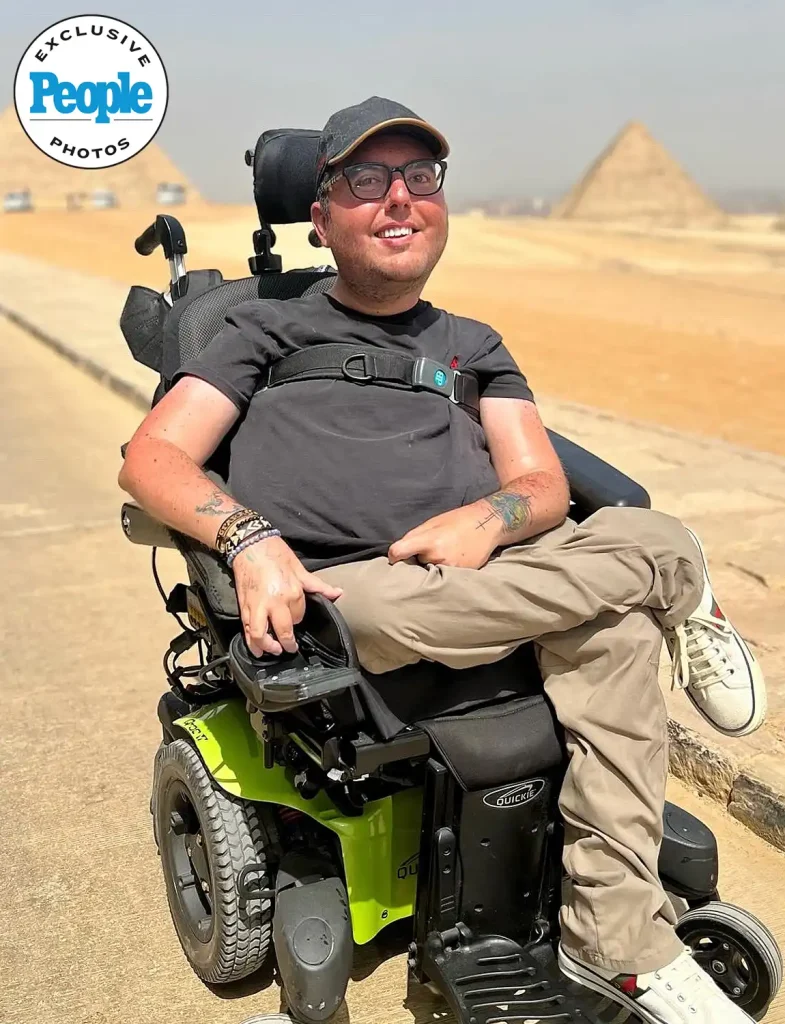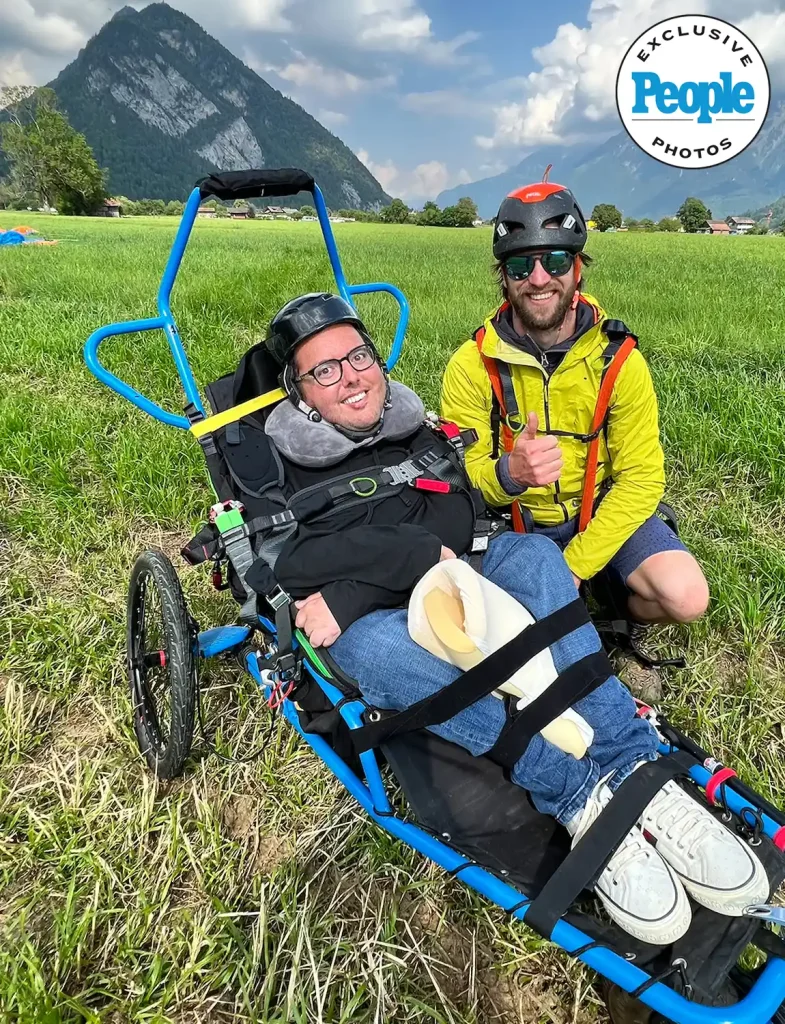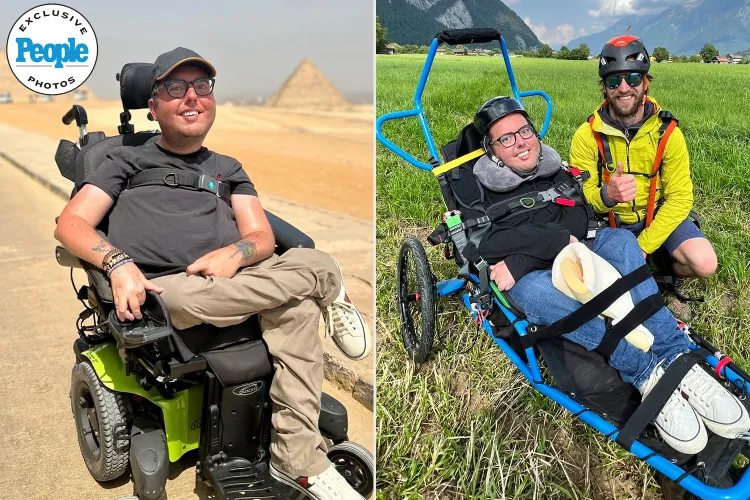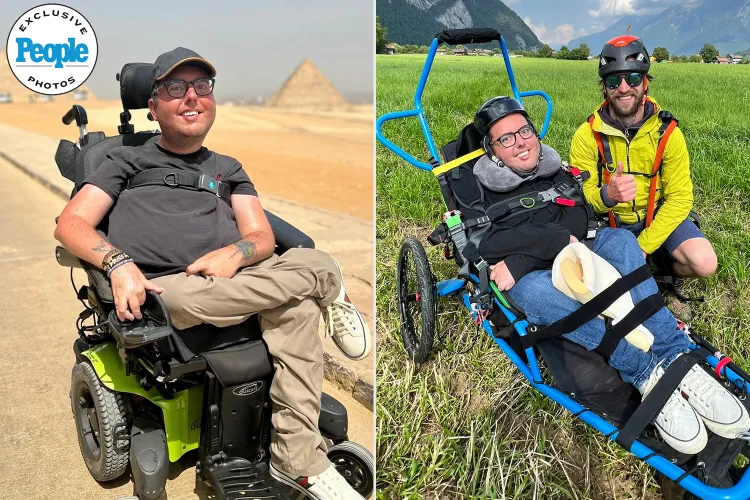How Cory Lee Turned a School Trip Rejection into a Global Wheelchair-Travel Mission
In the fifth grade, Cory Lee, then just a young boy in a wheelchair, watched his classmates board the bus for a school field trip while he was told he couldn’t take part because the vehicle was inaccessible. What might have been a moment of defeat became instead a spark that ignited an extraordinary journey. Diagnosed with spinal muscular atrophy (SMA) at just 2 years old, Lee has not allowed his disability to define the boundaries of his life. From that moment of exclusion to now traveling the world and advocating for accessible tourism, his story is one of determination, innovation and profound impact.

Lee, who today divides his time between home in Georgia and the road, reflects on the field-trip episode as one of the earliest signals that society often sees limitations before potential. His mother stood beside him that day, firmly objecting to the school’s decision. In his exclusive interview with People, Lee said the incident shaped his early understanding of what advocacy would mean in his life. What followed was a series of life decisions built not around pity for his condition, but around proving what was possible when you refuse to let the world tell you “you can’t.”
By age 4, Lee was using a powered wheelchair full-time, and by the time he graduated with a marketing degree from the University of West Georgia in 2014, he had already experienced first-hand how society undervalues the potential of wheelchair users. On one job interview, he recalled flying from Atlanta to Pittsburgh only to be told outright: “This job involves travel, so you’re not the best fit.” The rejection was a turning point. Rather than silence the ambition awakened in him, Lee used it as fuel.

He launched his travel blog Curb Free with Cory Lee in December 2013, determined to fill a yawning gap he had noticed: while there were countless guides to exotic destinations and backpacking adventures, there were very few resources tailored to wheelchair users who wanted to explore the world. He wrote not just of places seen, but of the logistics, hacks and mindset needed for navigating airports, hotels and tours that weren’t built with his experience in mind. Over time, the blog became a platform for not only personal stories but communal empowerment, helping others learn how to roll through streets in Barcelona or glide across a beach in Florida in a wheelchair adapted for sand.
Lee’s travel resume is impressive: he has visited over 50 countries and all seven continents while traveling in a wheelchair. These are the kinds of experiences that most people only dream of—and Lee did not let his diagnosis of SMA type 2 stop him from chasing them. SMA, a degenerative disease that leads to weakening of the muscles, meant that Lee recognized early how reliant he would be on his power wheelchair and on others for assistance. Yet he turned that reality into a disciplined impetus: he travels about 150 days a year, planning months in advance, researching accessible transport and stays, and always carrying a toolbox of mindset-strategies when things go wrong.

One of Lee’s most honest admissions is that flying is still one of his biggest hurdles. He cannot stay in his own chair during the flight, meaning his wheelchair is packed away in cargo where it is often damaged, and he must transfer into an aisle wheelchair just to board. In one airport, his front wheel was broken and he spent an entire day repairing it in Barcelona. On long flights, restrooms are nearly impossible to access, and he has had to fast and dehydrate himself just to avoid using them. Yet he persists, saying that for every problem there is a solution—and the world that waits on the other side is worth the hardship.
His mission isn’t just to travel—it’s to change how travel is done for people with disabilities. Through his reports and blog posts, he has influenced destinations to install beach access mats, developed accessible tour group trips (including to Morocco and Chile) and launched the Curb Free Foundation in 2022, offering travel grants to wheelchair users who might otherwise never get the chance. In his words, there is “no better teacher than travel,” because it builds empathy and challenges assumptions about disability and mobility.

Lee’s perspective on disability is worth noting: he says he doesn’t necessarily see himself as “someone with a disability,” even if the world often does. For him, being in a powered wheelchair since age 4 is simply part of his reality—and it spurred him even more to prove what is possible. His childhood, in Northwest Georgia, included road trips and regular family vacations, but once he entered adolescence the bug to travel internationally bit him hard. At 15 he visited the Bahamas, sampling new foods, culture and textures of life that were very different from the halls of his elementary school.
There are moments in Lee’s travel career that capture the scale of the challenge: one day he found himself trapped for four hours in a New York subway station because the elevators were broken and his 400-pound chair could not be carried up stairs. On another trip in Europe his wheelchair charger blew up in a Munich hotel, knocking out power. These experiences would discourage many—but to Lee, they simply reinforced the importance of preparedness and problem-solving. The world isn’t designed for him—but he’s determined to roll through it anyway, making it more accessible as he does.

Lee’s advocacy is not only practical but personal. Every time someone reaches out to him saying they began traveling because of his blog, he is reminded of his “why.” One such individual, Kelly Narky, told Lee she had set a goal to visit 50 countries by the time she turned 50 after reading about his journeys—and achieved it. For Lee, those ripple effects are what make his work meaningful. In his speech at travel conferences, he often emphasizes that accessibility isn’t just nice to have—it is a fundamental element of inclusion and human dignity.
At the same time, Lee remains frank about the realities of his condition. Spinal muscular atrophy continues to progress, and his strength will diminish over time. That knowledge is a powerful motivator. He knows there is a window for many of the adventures he dreams. Rather than shrink from it, he leans into it. This urgency gives his work a deeper dimension: he isn’t simply enjoying the world; he is racing the clock to document accessible experiences, change perceptions, and leave a legacy for the next generation.
Lee’s story resonates for many reasons. It’s the story of a little boy who was told he couldn’t simply because he used a wheelchair—and grew to become a man showing the world that disability is not inability. It’s the story of travel and transformation, of one person’s determination to reshape what is possible and create a more inclusive world. It’s also a push-and-pull between reality and dream: yes, he faces damaged wheelchairs, inaccessible restrooms, airports built for speed not inclusion—but he also rides camels in the Sahara, paraglides in Switzerland and leads groups of travelers with disabilities to destinations many never thought possible.
His ambitions continue. Through Curb Free Foundation he wants to ensure that finances are not a barrier for wheelchair users who dream of travel. He wants tour operators, airlines and destinations to adopt accessibility not as an afterthought but as a basic requirement. And he wants children growing up in powered wheelchairs to open magazines and websites and see someone who looks like them—someone who travels, laughs, explores and reports back, not from the sidelines but from the front of the plane.
In that sense, Lee’s journey is more than travel—it is proof. Proof that exclusion is not destiny, that mobility devices don’t have to limit horizons, and that the world can be reshaped, one accessible street, one airport conversation, one beach ramp at a time. When he looks back at the day he was told he couldn’t board that school bus, he doesn’t linger in that moment. He uses it as a reminder: the only trip he missed was the one he chose not to take. And now, he takes one nearly every few weeks.


